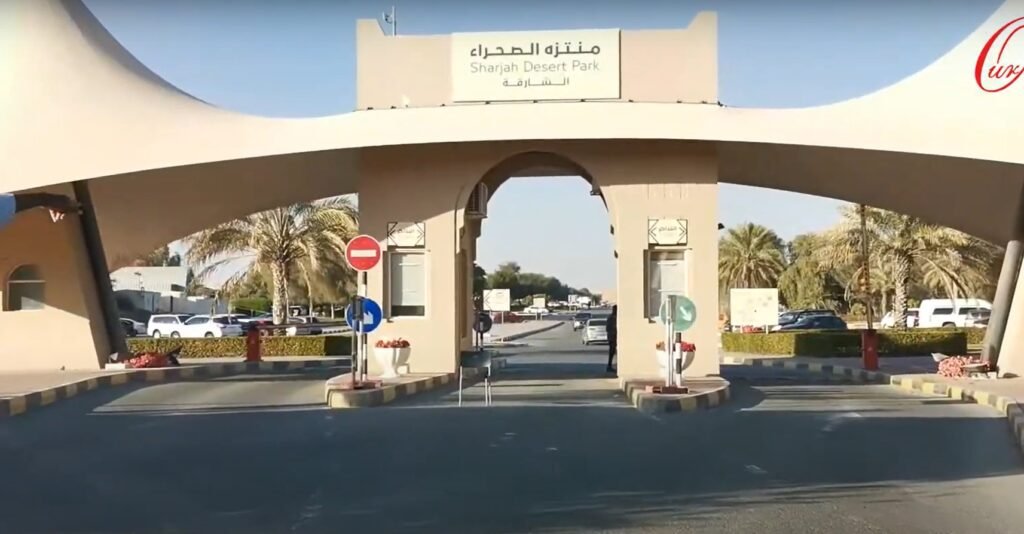Tucked away just 30 kilometers east of Sharjah city, the Sharjah Desert Park is more than just a tourist destination. It’s a place where nature is celebrated, wildlife is protected, and visitors are inspired to care about the environment. What started as a modest conservation effort in 1995 has now grown into one of the most important environmental and educational attractions in the UAE.
Spanning over 1,000 hectares, the park is a unique combination of education, conservation, and recreation. It offers a rare glimpse into the rich biodiversity of the Arabian Peninsula, with a strong focus on native plants and animals that are often overlooked in the region’s rapid development.
A Walk Through the Park: What to Expect
The park is thoughtfully divided into several sections, each with a unique theme and purpose. Whether you’re a wildlife lover, a student, or just a family looking for a day out, there’s something here for everyone.


1. Arabia’s Wildlife Centre
This indoor facility is the park’s crown jewel. It was the first place in the UAE to showcase the full range of the region’s animals under one roof. From desert foxes and Arabian leopards to spiny-tailed lizards and bats, visitors get to see a wide variety of creatures in environments that mimic their natural habitats.
Unlike a traditional zoo, the Wildlife Centre focuses on conservation and education. Animals here are not forced into artificial performances or kept in small cages. Instead, the centre works to preserve endangered species and educate the public about the importance of protecting wildlife.
You can walk through dark bat caves, peer into desert enclosures, or watch graceful birds of prey soar overhead. Interactive exhibits and informative signs make the experience both fun and enlightening for all ages.
2. Sharjah Natural History and Botanical Museum
This part of the park is where science and nature come alive. Through detailed exhibits and lifelike displays, the museum takes visitors on a journey through the formation of the Earth, the evolution of life, and the rich biodiversity of the UAE’s deserts.
One of the most engaging parts is the botanical section, which showcases the wide variety of desert plants that thrive in harsh conditions. You’ll learn how these plants survive long dry spells, what role they play in the ecosystem, and how they are used in traditional medicine and culture.
The museum also includes displays of fossils, rocks, and ancient tools, making it a great spot for school groups and young learners.

3. Children’s Farm
For families with kids, the Children’s Farm is a highlight. Here, little ones can get up close with farm animals like goats, cows, and chickens. They can feed the animals, ride ponies, or simply run around in a safe, open space.
This area is designed to help children understand where their food comes from and build respect for animals and the environment. There are also shaded play areas, picnic spots, and educational workshops offered throughout the year.
Conservation at the Core
What sets Sharjah Desert Park apart from other parks or zoos in the region is its deep commitment to conservation. The park doesn’t just display animals—it actively works to protect them, especially those at risk of extinction.
The Breeding Centre for Endangered Arabian Wildlife (BCEAW), although not open to the public, is one of the most important parts of the park’s operations. Here, scientists and veterinarians work behind the scenes to breed endangered species, conduct research, and reintroduce animals into the wild.
One of their most successful programs has been the breeding of the Arabian Oryx, a species that was once nearly extinct. Thanks to efforts from the breeding centre, this elegant antelope is now thriving in several protected areas.
A Focus on Sustainability
The park is also a model for eco-friendly practices. It uses solar energy for many of its facilities, practices water conservation, and ensures that animal enclosures are built in ways that reduce stress on the animals.
Visitors are encouraged to respect nature during their visit—no feeding wild animals, no littering, and no loud noises. Educational signs remind people of the importance of living in harmony with the environment.
Why It Matters
In a region known for its rapid urban development and high-rise buildings, Sharjah Desert Park offers something different—a connection to the land and a reminder of what’s worth protecting. It plays a critical role in preserving the cultural and natural heritage of the UAE.
With growing awareness about climate change and biodiversity loss, places like Sharjah Desert Park are not just recreational spots—they are essential centers for learning and conservation.
The park also reflects the vision of His Highness Dr. Sheikh Sultan bin Mohammed Al Qasimi, Ruler of Sharjah, who has long supported environmental and cultural initiatives across the emirate. His belief in preserving nature for future generations is at the heart of this unique desert sanctuary.
Plan Your Visit
The park is open year-round, except on Tuesdays. Mornings are usually the best time to visit, especially during the cooler months between October and March.
There’s a small entry fee, but it’s well worth it for the experience. All facilities are clean, family-friendly, and accessible. The staff is helpful, and most signs are in both Arabic and English.
Also read: Kalba’s Beautiful Corniche Park Might Be Sharjah’s Best-Kept Secret













